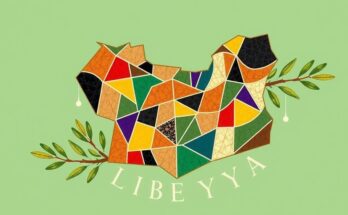In November 2024, a ceasefire ended hostilities between Hizbollah and Israel, following a significant escalation that had begun a year earlier. The aftermath necessitates addressing ongoing tensions, particularly concerning the potential disarmament of Hizbollah and the integration of displaced populations. As Lebanon navigates these challenges, new political leadership aims to balance internal pressures with the need for reform and stability in the face of external influences.
In November 2024, a ceasefire concluded fourteen months of hostilities between Hizbollah and Israel, which began after Hamas’s attacks on Israel on October 7. Despite the truce, tensions surrounding the conflict remain heightened in Lebanon. Israel inflicted considerable damage on Hizbollah, emboldening its adversaries within the Lebanese political landscape to revisit the contentious topic of disarming Hizbollah, a requirement of the ceasefire. While many of the million displaced Lebanese have returned home, the potential for renewed tensions persists if the ceasefire fails.
Although the ceasefire remains intact, its durability is questionable. Hizbollah and Israel continue to accuse one another of violations, and Israel’s delayed withdrawal from southern Lebanon has further inflamed the situation. The war has generated significant challenges, particularly concerning the displacement of Shiite residents, leading to resurging hostility among some non-Shiites. Following the war, debates have emerged regarding Hizbollah’s future military role in post-war Lebanon, with sharply divided narratives characterizing the victory claims of Hizbollah and the criticisms from rival groups.
The newly appointed Lebanese leadership faces the urgent need to manage tensions while adhering to the terms of the ceasefire. In early 2025, Lebanese politicians elected General Joseph Aoun as president and appointed Nawaf Salam as head of the new cabinet. Aoun’s pledge to assert state control over arms resonates positively with many citizens, but Hizbollah’s cooperation is uncertain due to its historical dominance within Lebanon’s political and security frameworks, fortified by Iranian support.
Hizbollah, retaining substantial military capabilities, is poised as a considerable force against potential adversaries. Although its military strength has been impacted, the group remains perceived as a formidable entity within Lebanese politics, aided by its parliamentary presence. The sovereignist faction seeks to curtail Hizbollah’s influence, advocating for the group to respect the truce and disband its armed forces, all while acknowledging the group’s reluctance to comply with disarmament demands, which could provoke unrest.
As both domestic and external actors navigate the new political landscape, the primary goal must be the stabilization of the ceasefire and a measured approach toward disarmament discussions. The potential for conflict persists, particularly as the US government indicates an ongoing strategic interest in Lebanon. A comprehensive strategy should emphasize support for the Lebanese army and facilitate humanitarian assistance to constitutionally rebuild the nation, fostering longevity in peace efforts.
In conclusion, the cessation of hostilities between Hizbollah and Israel has created a fragile environment in Lebanon, where underlying tensions persist. The newly elected leadership must navigate these complexities by negotiating disarmament with Hizbollah while maintaining external support for the Lebanese armed forces. The endeavors towards stability and reconstruction will require a concerted effort to foster dialogue and avoid exacerbating civil unrest in Lebanese society.
Original Source: reliefweb.int




